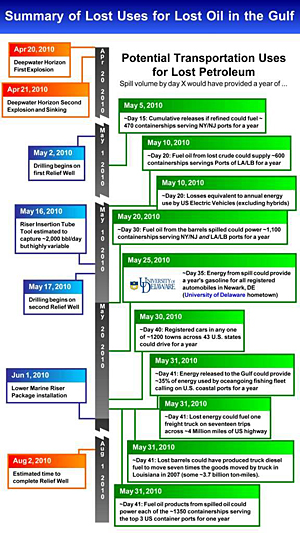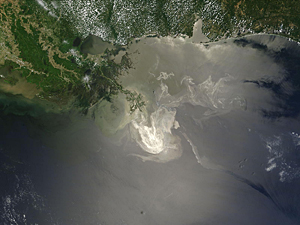


ADVERTISEMENT
- Rozovsky wins prestigious NSF Early Career Award
- UD students meet alumni, experience 'closing bell' at NYSE
- Newark Police seek assistance in identifying suspects in robbery
- Rivlin says bipartisan budget action, stronger budget rules key to reversing debt
- Stink bugs shouldn't pose problem until late summer
- Gao to honor Placido Domingo in Washington performance
- Adopt-A-Highway project keeps Lewes road clean
- WVUD's Radiothon fundraiser runs April 1-10
- W.D. Snodgrass Symposium to honor Pulitzer winner
- New guide helps cancer patients manage symptoms
- UD in the News, March 25, 2011
- For the Record, March 25, 2011
- Public opinion expert discusses world views of U.S. in Global Agenda series
- Congressional delegation, dean laud Center for Community Research and Service program
- Center for Political Communication sets symposium on politics, entertainment
- Students work to raise funds, awareness of domestic violence
- Equestrian team wins regional championship in Western riding
- Markell, Harker stress importance of agriculture to Delaware's economy
- Carol A. Ammon MBA Case Competition winners announced
- Prof presents blood-clotting studies at Gordon Research Conference
- Sexual Assault Awareness Month events, programs announced
- Stay connected with Sea Grant, CEOE e-newsletter
- A message to UD regarding the tragedy in Japan
- More News >>
- March 31-May 14: REP stages Neil Simon's 'The Good Doctor'
- April 2: Newark plans annual 'wine and dine'
- April 5: Expert perspective on U.S. health care
- April 5: Comedian Ace Guillen to visit Scrounge
- April 6, May 4: School of Nursing sponsors research lecture series
- April 6-May 4: Confucius Institute presents Chinese Film Series on Wednesdays
- April 6: IPCC's Pachauri to discuss sustainable development in DENIN Dialogue Series
- April 7: 'WVUDstock' radiothon concert announced
- April 8: English Language Institute presents 'Arts in Translation'
- April 9: Green and Healthy Living Expo planned at The Bob
- April 9: Center for Political Communication to host Onion editor
- April 10: Alumni Easter Egg-stravaganza planned
- April 11: CDS session to focus on visual assistive technologies
- April 12: T.J. Stiles to speak at UDLA annual dinner
- April 15, 16: Annual UD push lawnmower tune-up scheduled
- April 15, 16: Master Players series presents iMusic 4, China Magpie
- April 15, 16: Delaware Symphony, UD chorus to perform Mahler work
- April 18: Former NFL Coach Bill Cowher featured in UD Speaks
- April 21-24: Sesame Street Live brings Elmo and friends to The Bob
- April 30: Save the date for Ag Day 2011 at UD
- April 30: Symposium to consider 'Frontiers at the Chemistry-Biology Interface'
- April 30-May 1: Relay for Life set at Delaware Field House
- May 4: Delaware Membrane Protein Symposium announced
- May 5: Northwestern University's Leon Keer to deliver Kerr lecture
- May 7: Women's volleyball team to host second annual Spring Fling
- Through May 3: SPPA announces speakers for 10th annual lecture series
- Through May 4: Global Agenda sees U.S. through others' eyes; World Bank president to speak
- Through May 4: 'Research on Race, Ethnicity, Culture' topic of series
- Through May 9: Black American Studies announces lecture series
- Through May 11: 'Challenges in Jewish Culture' lecture series announced
- Through May 11: Area Studies research featured in speaker series
- Through June 5: 'Andy Warhol: Behind the Camera' on view in Old College Gallery
- Through July 15: 'Bodyscapes' on view at Mechanical Hall Gallery
- More What's Happening >>
- UD calendar >>
- Middle States evaluation team on campus April 5
- Phipps named HR Liaison of the Quarter
- Senior wins iPad for participating in assessment study
- April 19: Procurement Services schedules information sessions
- UD Bookstore announces spring break hours
- HealthyU Wellness Program encourages employees to 'Step into Spring'
- April 8-29: Faculty roundtable series considers student engagement
- GRE is changing; learn more at April 15 info session
- April 30: UD Evening with Blue Rocks set for employees
- Morris Library to be open 24/7 during final exams
- More Campus FYI >>
For a video report on Prof. James J. Corbett's work, see the YouTube page.
2:07 p.m., June 9, 2010----As of today (Wednesday, June 9), if all the oil from the Deepwater Horizon spill in the Gulf of Mexico had been used for fuel, it could have powered 38,000 cars, and 3,400 trucks, and 1,800 ships for a full year, according to University of Delaware Prof. James J. Corbett. That's based on the estimated spill rate of 19,000 barrels of oil per day.
Corbett, a professor of marine policy in UD's College of Earth, Ocean, and Environment, works on energy and environmental solutions for transportation. He has launched a website that reports the impact of the Deepwater Horizon oil spill in terms of lost uses of the lost fuel on a daily basis.
Visitors to the website can choose the spill rate they believe is most accurate from a range of reported estimates, and the website will automatically calculate how many cars, trucks, and ships could have been powered for a year, based on Bureau of Transportation Statistics.
Here are just a few of Corbett's findings:
- By May 5 (15 days after the spill), the oil lost could have fueled 470 container ships serving New York and New Jersey ports for a year.
- By May 25 (35 days after the spill), energy from the spilled oil could have provided a year's gasoline for all registered automobiles (about 26,000 cars) in Newark, Del., where UD's main campus is located.
- By May 31 (41 days after the spill), the lost energy could have fueled one freight truck on 17 trips across all 4 million miles of U.S. highway.
Corbett says he developed the website to help put the oil spill in a perspective to which everyday users of petroleum, including most Americans, can relate.
Transportation activities consume about two-thirds of all petroleum in the United States -- more than 20 billion barrels per day, according to Corbett. Gasoline for automobiles accounts for about two-thirds of U.S. total transportation energy, diesel fuels power most of our goods movement, and most international containerized cargoes are delivered by ships -- the largest vehicles ever built.
“Energy resources offshore are being explored because each of us petroleum consumers is demanding more,” Corbett says.
The website also may help us decide how to reduce risks of future oil spills.
“Drilling this exploratory well by the Deepwater Horizon was an extremely high-risk proposition,” Corbett says. “At $75 per barrel of crude oil, the oil spilled would have been worth about $90 million in terms of spill oil value if extracted for refining. Some experts are now estimating damages from the spill to exceed $10 billion. That's a potential 100 to 1 loss, given the spill damage-to-value ratio.”
Corbett's research collaborations focus on ways to improve the energy performance of transportation systems using ships, trucks, trains, and other vehicles. There are ways to reduce the need for offshore oil drilling, Corbett says:
- If we improve automobile fuel economy to 35.5 miles per gallon (mpg), as proposed by the current administration, we would offset demand equivalent to the gasoline energy lost by 199 years of Deepwater Horizon daily releases.
- If we add only 2 mpg to the fuel economy for trucks, as proposed by the Union of Concerned Scientists, we would offset diesel-driven energy demand equivalent to 12 years of Deepwater Horizon daily releases.
- Rebalancing how we transport goods would achieve substantial energy savings. A shift from truck to rail for specific commodities/routes would require about 20 percent of the energy per ton-mile compared to trucking. Achieving this would require an investment in infrastructure and green logistics to facilitate intermodal combinations of trucking and rail rather than treating the modes as competitors.
- Shifting passengers from single-occupant cars to car-sharing/carpooling and better transit also would produce important reductions.
“The wise use of petroleum and other energy resources is an opportunity for each of us,” Corbett says. “We can reduce the need to drill deeper into environmental risk. Within a few miles of our communities, we can do a lot to reduce energy demand.”
Article by Tracey Bryant


